Science at McGill continued to grow throughout the mid-twentieth century, building on the investments and advancements achieved during the first part of the century. One notable difference was the expansion of McGill’s global reach. Between 1930 and 1970, several research institutes were established within Canada and outside of it. This period culminated with the formal creation of the Faculty of Science at McGill.
In this period:
- Moving further afield: the emergence of global and interdisciplinary research institutes
- Building out the downtown campus
- The people of McGill: notable faculty and alumni
- Our blue dot: geography, EPS, and AOS
- The exponential rise and growth of the Department of Mathematics and Statistics
- The changing face of STEM
- Image Gallery
Moving further afield: The emergence of global and interdisciplinary research institutes
1931-1970
During the mid-twentieth century, McGill’s scientific research expanded permanently beyond the Montreal area, into both the Arctic and the Southern hemispheres.
Between 1930 and 1970, several new scientific research institutes and research stations were created, expanding the reach of science, and creating new opportunities for interdisciplinary research. In addition to research centres near Montreal, such as the Gault Nature Reserve and the J.S. Marshall Radar Observatory on Macdonald Campus, research stations were established during this period in remote areas of Canada, as well as internationally.
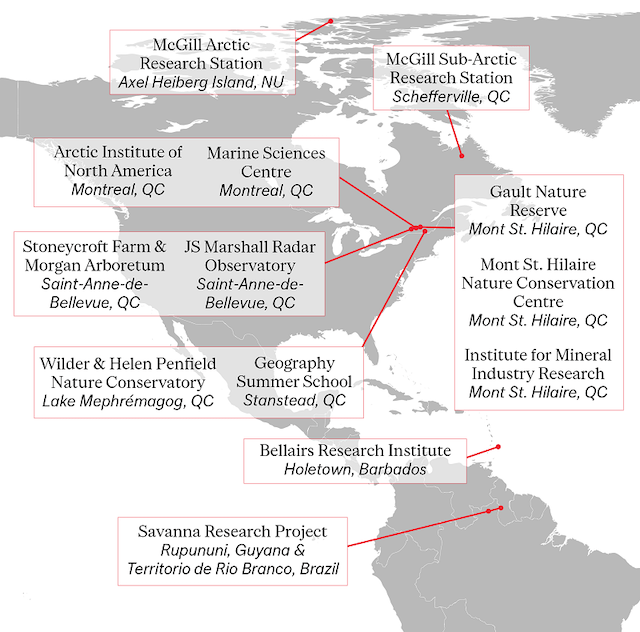
Arctic Research
The Arctic and sub-Arctic were an area of interest for McGill researchers over a long period of time. In 1945, McGill Professor J.J. O’Neill helped found the Arctic Institute of North America, Canada’s first and longest-running Arctic research centre. In 1954, a research grant supported the creation of the McGill Sub-Arctic Research Station (MSARS) in Schefferville, Quebec. The station enabled researchers to conduct year-round research on the vast lichen woodland, which contains numerous lakes, ponds, streams, wetlands, and alpine tundra. A few years later, another research station, the McGill Arctic Research Station (MARS) expanded the scope of McGill’s Arctic research. Marked by the unprecedented Jacobsen-McGill expedition to Axel Heiberg Island in Nunavut, MARS was established in 1959. MARS is one of the longest operating seasonal research facilities in the High Arctic, containing a small research hut, a cook house, and two temporary structures that can accommodate up to twelve people. Currently, research in glaciology, climate change, permafrost hydrology, geology, geomorphology, limnology, planetary analogues, and microbiology is being pursued at the station. Recent users of the station have included NASA, the Polar Continental Shelf Project, the Geological Survey of Canada, and the Canadian Museum of Nature.
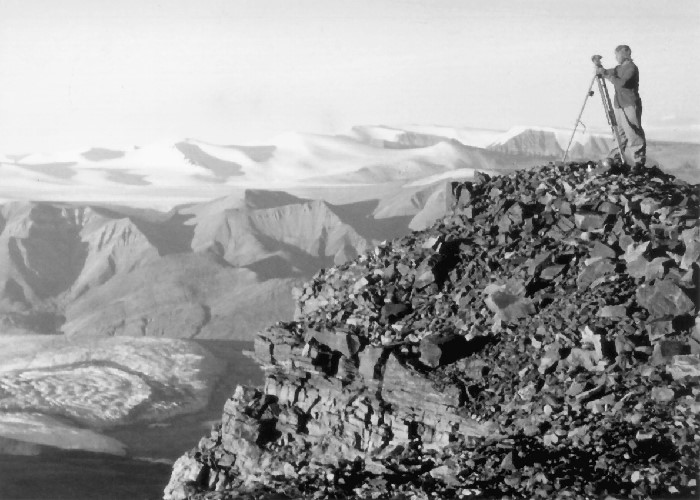
Southern research
While McGill’s scientific research was expanding northward, the university’s scientific focus was shifting to warmer locales as well. In Holetown, Barbados, the Bellairs Research Institute was initiated in 1954 by Commander Carylon W. Bellairs. The institute was created to support research in the tropics and still serves as the only Canadian teaching and research facility in the Caribbean. Currently, a 13-week summer course for undergraduate students takes place at the institute every year. The site has a range of marine habitats, including intertidal sand and rock, coral reefs, estuaries and mangroves, algal and seagrass beds, and deep oceanic water close to shore. Bellairs has expanded from housing mainly marine science research to an array of disciplines in the natural and social sciences, like geology, geography, archaeology, climatology, biology, ecology, horticulture, agriculture, and sustainability. Bellairs maintains a global presence, hosting students and scientists from around the world for field courses, workshops, and research projects.
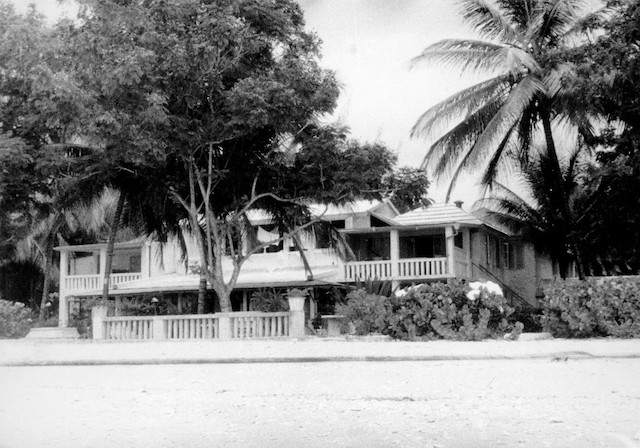
Less than a decade later, in 1962, the Savannah Research Project was established in Rupununi, Guyana, and the Territorio do Rio Branco in Brazil. The project was created as an experimental and observational field program to study the ecological relations of the savanna and to better understand the nature and distribution of the vegetation in the region. Former McGill geography professor Theo Hills was a leading researcher in this project, whose studies led to the creation of the Centre of Developing Area Studies at McGill.
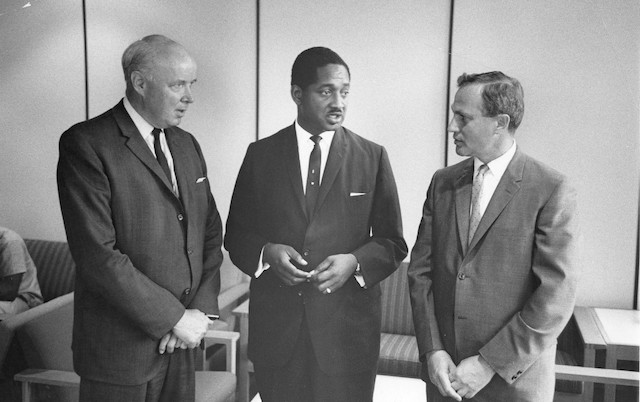
These research centres provided new opportunities for both students and faculty to conduct cutting edge scientific research across the Northern and Southern Hemispheres.
Building out the downtown campus
1931-1970
The rapid increase in enrolment following the Second World War meant that McGill’s campus, much of it built in the 1890s, needed to change as well. As a result, the physical footprint of the campus was expanded significantly in the following decades, transforming into what we are familiar with today.
Following the end of World War II, enrolment at McGill increased quickly, coinciding with the rapid expansion of scientific research. To keep pace with these changes, the university needed to expand its physical infrastructure. Moving into the early 1950s, most scientific research was carried out in facilities built at the end of the 19th century. This limited both the types of research that could be carried out, as well as its scope and magnitude. Between 1950 and 1970, the university invested in the construction of new buildings to serve the more advanced needs of scientific research and education. This investment had massive payoffs, vastly increasing the university’s research output and in turn attracting a new generation of students and researchers.
In 1946, construction commenced for the Radiation Laboratory (later the Foster Radiation Laboratory), with the new building inaugurated in 1948. The building provided more space and more modern equipment for the Physics Department, including housing the McGill 100 MeV cyclotron, the second largest cyclotron in the world and the first ever in Canada. In 1949, the cyclotron was fully commissioned and accelerated protons up to MeV energy. Soon after, the Eaton Building was constructed in 1950, adjacent to the Radiation Laboratory. It was here in 1961 that Professor Robert Bell and his student Richard Barton discovered a new form of radiation called delayed proton emission.
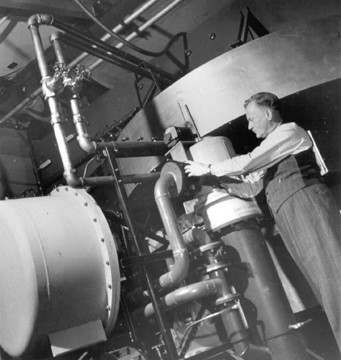
Closer to Sherbrooke Street, the Frank Dawson Adams Building, originally known as the Physical Sciences Centre, was opened in 1951. It was created to serve the growing needs of the geological sciences, which had previously shared space within the MacDonald Chemistry Building with other science departments and the Faculty of Engineering. Its move not only signaled the growing needs of these scientific departments, but also the expansion of other departments and faculties, like engineering, during this period. The building’s namesake was Frank Dawson Adams, a professor in the Department of Geology who served as Vice Principal of the university from 1920 to 1924 and was the first Chair of Graduate Students.
The next significant development at the university took place on the north western corner of campus, with the 1965 construction of the McIntyre-Stewart Complex, better known as Stewart Biology. Throughout the 1960s, the biological sciences laboratories were facing increasing pressure, from growing student enrolment and the changing needs of biological sciences. Prior to the construction of Stewart Biology, the Biological Sciences were housed in the Old Biology Building (which now serves as the James Administration Building) which by the 1960s could not keep pace with the growing discipline. To increase the cohesiveness and efficiency of the three departments (Zoology, Botany, and Genetics), they were eventually merged into one single Department of Biology. This was no small feat, as the three departments contained over 50 academics with diverse scholarly interests. The new department decided to focus its attention on a few areas in biology, rather than trying to cover every possible subject area. After much discussion, it was decided that the department would specialize in ecology, human genetics, molecular biology, and neurobiology. This decision not only brought the department into the modern era of research, but the scope of the research carried within the department also distinguished it from most other biology departments in Canada.
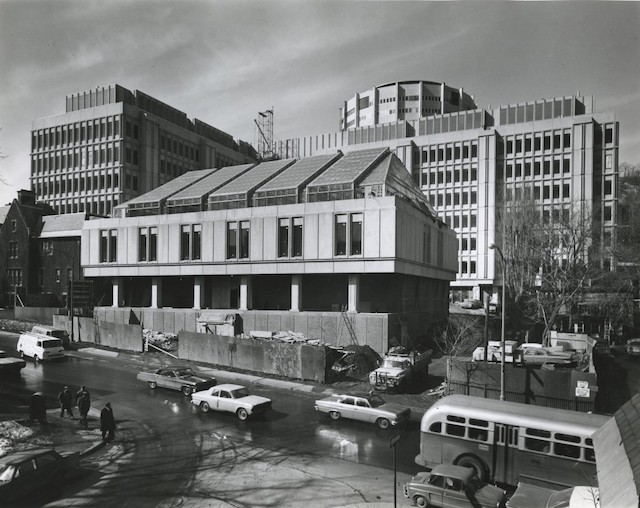
The opening of the McIntyre-Stewart Complex was followed closely by the Otto Maas Chemistry Building opened at the south east side of campus. Named after the well-known Chair of the Chemistry Department during the Second World War, Otto Maas, the building facilitated the continued expansion of the department.
This period of expansion of scientific infrastructure was rounded out by Burnside Hall, adjacent to Otto Maas. The brutalist structure opened in 1970 to house the Departments of Mathematics and Statistics, Geography, and Atmospheric and Oceanic Sciences. Underground tunnels connect the building to nearby buildings and the rooftop houses meteorological equipment. Although the new building expanded the capacity of many departments, many did not appreciate its design.
The people of McGill: Notable faculty and alumni
1931-1970
During this era, many graduates and faculty members at McGill distinguished themselves through their scholarly research, leading to innovative and trailblazing findings in their field. Here is a brief snapshot of some of the individuals that played a leading role in growing McGill into a world leader within the Faculty of Science.
If there are additional graduates or faculty members that you would like to nominate to this list, contact us at timeline200.science@mcgill.ca.
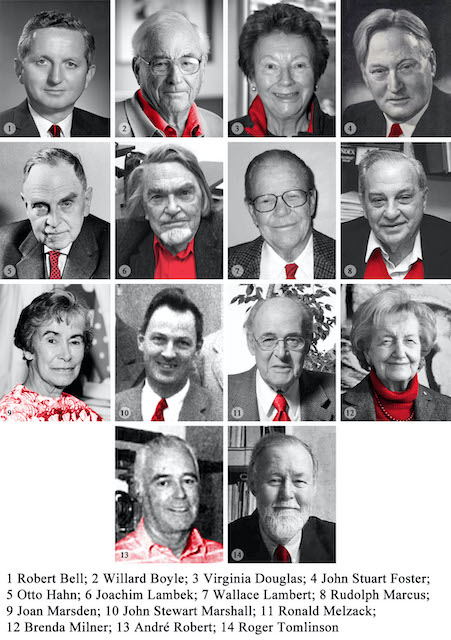
Robert Bell (1918-1992), discovered a new form of radioactivity
Robert Bell obtained his PhD from McGill in 1948, and in 1960, he was named the Rutherford Professor of Physics and appointed as the Director of the Foster Radiation Laboratory at McGill. This laboratory is where Bell and his student R. Barton discovered a new form of radioactivity — proton emission. Bell is also known for contributions to the study of the nuclear interaction energy between a proton and a neutron and the invention of the direct timing method for measuring nuclear processes down to a fraction of a billionth of a second.
Willard Boyle (1924-2011), pioneer in laser technology and co-inventor of the charge-coupled device
Willard Boyle obtained his entire post-secondary education from McGill, graduating with a BSc in 1947, a Masters in 1948, and a PhD in 1950. After receiving his PhD, Boyle joined Bell Labs in 1953, where he co-invented the first continuously operating ruby laser in 1962, and held the first patent for a semiconductor injection laser. Boyle served as the Director of Space Science and Exploratory Studies at Bellcomm in 1962, where he helped select lunar landing sights and provided support for the Apollo Space Program. In 2009, Boyle was a co-recipient of the Nobel Prize in Physics for inventing an imaging semiconductor circuit, the CCD sensor, which is an electronic eye in photography.
Virginia Douglas (1927-2017), pioneer of research on ADHD
Virginia Douglas joined McGill as a professor of psychology in 1958 and her profound research on ADHD (Attention-Deficit / Hyperactivity Disorder) was published in the famous article “Stop, look and listen: The problem of sustained attention and impulse control in hyperactive and normal children,” becoming the most cited paper in the field and redefining the boundaries of this disorder. Douglas also expanded the Psychology department’s terminal Master’s degree program into a PhD program and was president of the Canadian Psychological Association in 1971, receiving several awards for her research, such as the Gold Medal for Distinguished Lifetime Contributions to Canadian Psychology in 2004.
John Stuart Foster (1890-1964), creator of the Foster scanner
John Stuart Foster was a professor at McGill from 1924 until his retirement in 1960. Through his work and collaborations with the Radiation Laboratory, he created a radar antenna known as the Foster scanner and made important theoretical advancements on the effect of strong electrical fields on the helium atom, known as the “Stark effect”. McGill honoured his accomplishments by naming the John Stuart Foster Radiation Laboratory and Cyclotron after him in 1964, a name which is still engraved on the side of the building now known as the M. H. Wong Building.
Otto Hahn (1879-1968), father of nuclear fission and nuclear chemistry
Otto Hahn worked at McGill in 1905 and 1906. He is known as the father of nuclear fission and nuclear chemistry, and is known for his research in the nuclear fission of uranium and thorium. He was awarded the Nobel Prize in Chemistry in 1944 for the discovery and the radiochemical proof of nuclear fission, which he discovered with Lise Meitner. In his time at McGill, Hahn worked closely with Ernest Rutherford, where he discovered thorium C (later identified as polonium-212), radium D (later identified as lead-210), and radioactinium (later identified as thorium-227), and investigated the alpha-rays of radiothorium.
Joachim Lambek (1922-2014), champion of categorical mathematics
Joachim Lambek was a BA, Masters, and PhD alumnus from McGill, who served as professor of Mathematics at McGill until his retirement in 1992. Lambek was an eminent mathematician, lecturing and publishing in algebra, logic, category theory, computational linguistics, theoretical physics, and the history and philosophy of mathematics. Of his most notable work, Lambek published the Lambek theorem to characterize the flatness of a module, and the Lambek calculus to capture mathematical aspects of natural language syntax in logical form. In 2014, on the occasion of Lambek’s 90th birthday, a collection of essays were published to celebrate Lambek’s wide-ranging contributions to mathematics, logic, language, and physics.
Wallace Lambert (1922-2009), father of the psychological study of bilingualism
Wallace Lambert was a professor of Psychology at McGill from 1954 until his retirement in 1990. Among the founders of psycholinguistics and sociolinguistics, Lambert’s highly productive career included contributions to social and cross-cultural psychology, language education, and the social, cognitive, and neuropsychological consequences of bilingualism. Due to the broad scope and influence of his work, Lambert is widely considered the father of the psychological study of bilingualism.
John Stewart Marshall (1911-1992), pioneer of weather radar
John Stewart Marshall was a professor at McGill from 1945 until his retirement in 1979. Marshall was among the first to observe precipitation by radar during the Second World War, and he worked on the development and application of weather radar, precipitation, and cloud physics through the Stormy Weather Group. In 1967, the Air Force Cambridge Research Laboratories gifted Marshall with a new facility for meteorological work, the J.S. Marshall Radar Observatory, which is still operational as a teaching and research post at McGill’s Sainte-Anne-de-Bellevue location on MacDonald campus.
Rudolph Marcus (1923-), father of the Marcus theory of electron transfer
Rudolph Marcus is a BSc and PhD alumnus of McGill in 1943 and 1946, respectively. A heavily published and awarded researcher, Marcus greatly contributed to the modern field of chemistry through many theories and discoveries, among them the Marcus theory, which provides a thermodynamic and kinetic framework for describing electron transfer reactions in chemical systems. He was awarded the Nobel Prize in Chemistry in 1992 for these contributions.
Joan Marsden (1922-2001), led the development of biology at McGill
Joan Marsden was a professor of Biology at McGill from 1952 until her retirement in 1987. Her association with McGill spanned over 60 years, from her BSc degree (awarded in 1943) to her Directorship of the Bellairs Institute in Barbados, a position she held at the time of her passing. Marsden is most known for her research on the ecological, physiological, and neurobiological perspectives of the polychaete worm, and for her instrumental role in creating and shaping the Department of Biology during its inception in 1969. In honour of her work, McGill established a fund to perpetuate her memory by means of the Joan Marsden Lectures in Organismal Biology.
Ronald Melzack (1929-2019), revolutionized research on pain
Ronald Melzack was a professor of Psychology at McGill from 1963 until his retirement in 1999. A BSc, Masters, and PhD alumnus from McGill, Melzack is considered as one of the most famous and prominent pain researchers in the world. He revolutionized pain research by introducing the gate control theory of pain to assert that pain is subjective and multidimensional because several parts of the brain contribute to it at the same time. Through his research, he also developed the McGill Pain Questionnaire, an index to rate pain, which is still the world’s most widely used method for measuring pain in clinical research.
Brenda Milner (1918-), founder of neuropsychology
After graduating with a BSc and MA in Psychology from Cambridge University, Brenda Milner pursued her PhD in Physiological Psychology from McGill, where her novel research in neuropsychology led to her founding the field. Since 2010, Milner has been a professor in the Department of Neurology and Neurosurgery at McGill, as well as a professor of psychology at the Montreal Neurological Institute. Milner’s legacy in the field of neuropsychology has been widely recognized through the honorary degrees that have been granted to her, adding up to over twenty. Having turned 100 in 2018, Milner’s commitment to her work is evident in the fact that she is still teaching and conducting research.
André Robert (1929-1993), developed mathematical models of atmospheric circulation
André Robert was a PhD alumnus of McGill in 1965. He developed and implemented efficient numerical techniques that govern the evolution and circulation of the earth’s atmosphere, eventually pioneering the first successful spectral method for global forecasting. Robert’s methods have been widely adopted across the field and are now used in models at the world’s largest weather prediction and climate research centres.
Roger Tomlinson (1933-2014), father of geographic information systems
Roger Tomlinson completed his Master’s degree in geography from McGill, where he specialized in glacial geomorphology of Labrador in 1961. Tomlinson then worked with the Government of Canada in the computer mapping division and regional planning systems, where he conceptualized combining land use mapping with emerging computer technology. This led him to initiate, plan, and direct the development of the Canadian Geographic Information System, the first computerized GIS system in the world. The Laboratory for Geographic Information and Environmental Analysis in the Department of Geography is named after Tomlinson, who was made a member of the Order of Canada in 2001.
Our blue dot: Geography, EPS, and AOS
1931-1970
The Departments of Geography, Earth and Planetary Sciences, and Atmospheric and Oceanic Sciences are united in their common interest of the science of the Earth. Although they represent some of the youngest departments in the Faculty of Science, they each have robust programs at the forefront of teaching and research in Canada.
Geography
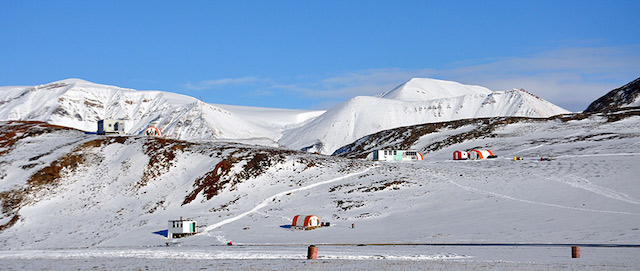
McGill’s Department of Geography was the first department of its kind in Canada, initially developed in conjunction with the Department of Atmospheric and Oceanic Sciences and the Department of Earth and Planetary Sciences. The philosophies of the departments began to clash, however, causing them to separate. The Department of Geography became its own entity in 1944, with George Kimble appointed as the first professor of geography. The geography curriculum became more specialized in the 1970s, branching into developmental geography, health geography, urban studies geography, geomorphology, hydrology, soils, biogeography, and climate geography. The department is roughly split between human and physical geography, with about 70% of its scholars interested in humans’ impact on the environment. The Department of Geography has a large graduate program that is entirely research-based, receiving 80-100 graduate students per year. The department has campus facilities for learning and research that are complemented by field stations around the globe, as well as international exchange and field research programs, such as the urban field studies course, which offers opportunities for geographical research in urban public and semi-public spaces, with demonstration of techniques of mapping, sampling, measurement, photography, and interviewing. The Department celebrated its 75th anniversary in 2020.
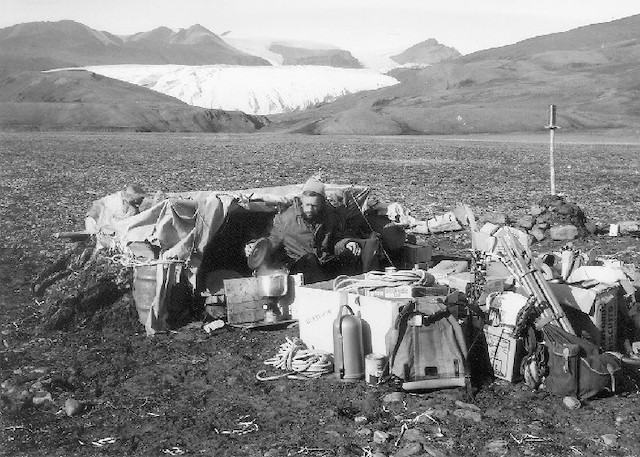
Atmospheric and Oceanic Sciences
The Department of Atmospheric and Oceanic Sciences (AOS) is rooted in a long and rich history of research in meteorology, primary radar, and weather. The beginnings of meteorology at McGill can be traced to the Smallwood Observatory, a small building built in 1841 on Charles Smallwood’s property, in what is now downtown Laval. In 1863, the equipment from the Smallwood Observatory was moved to McGill’s campus, establishing the McGill Observatory. McGill became the headquarters of the Stormy Weather Research Group and the Arctic Meteorology Research Group. In 1968, the McGill Weather Radar Observatory was built on MacDonald campus, which is now known as the J.S. Marshall Observatory. In 1986, McGill collaborated with the Natural Sciences and Engineering Research Council to initiate Canada’s first university Climate Research Group.
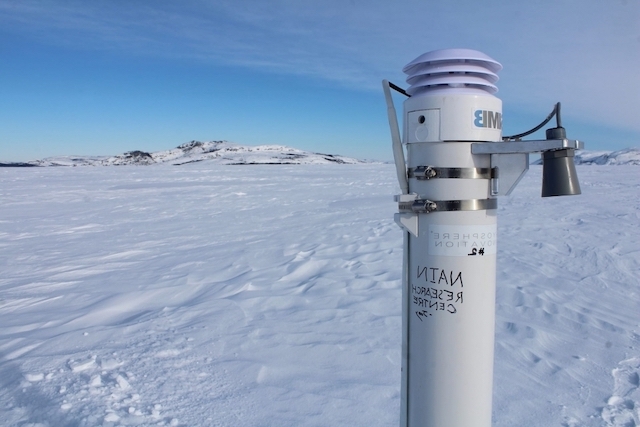
The origin of oceanographic research at McGill also dates back to the 1850s. In 1963, the Marine Sciences Centre (later the Institute of Oceanography) was established. The institute offered Masters and PhD programs in physical, geological, and biological oceanography. The institute closed in 1987 and was replaced by a graduate program in oceanography. This program accommodated the teaching and research in the marine sciences already taking place in the Departments of Earth and Planetary Sciences, Biology, and what soon became the Department of Atmospheric and Oceanic Sciences in 1992. Today, AOS is one of North America’s primary centers for teaching, research, and service in its respective fields. The strength of the department lies in its graduate research and education. The department is the largest of its kind in Canada, and has a diverse range of specialties including meteorology, physical oceanography, climate variability, remote sensing, atmospheric chemistry and physics, and green technology.
Earth and Planetary Sciences
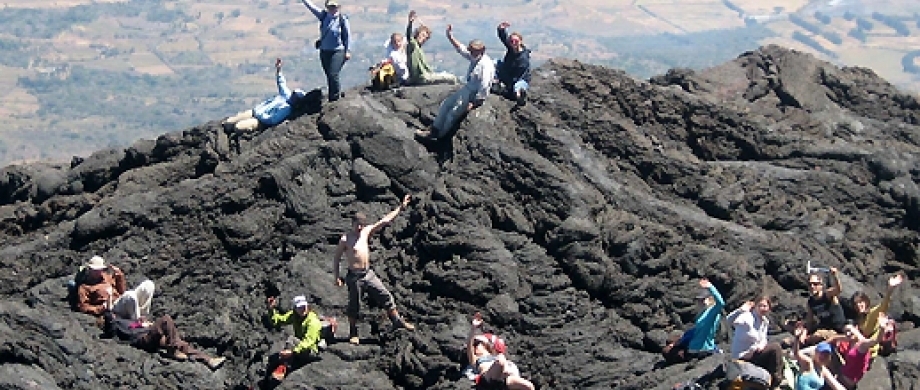
Geology was brought to McGill by Sir John William Dawson when he became the fifth principal of the university in 1855. Dawson held the Logan Chair in geology from 1871 until his retirement in 1892. Frank Dawson Adams, who has been called the father of modern experimental geology, succeeded Dawson as Logan professor in 1892, and for the following two decades carried out unprecedented work on the petrography of igneous and metamorphic rocks and the deformation and flow of rocks. The department awarded its first Masters in 1901 and its first PhD in 1924, and then expanded significantly under the leadership of Thomas H. Clark in the 1950s and under James E. Gill in the 1960s. Researchers from the Marine Science Institute, along with the hiring of a planetary geophysicist and chemical oceanographer, led to the department officially being named the Department of Earth and Planetary Sciences (EPS) in 1993 — the only department of its kind at the time of its inception. In addition to serving Montreal and Quebec, EPS has always housed a significant portion of students from other areas of Canada and from countries around the world, at both the graduate and undergraduate levels.
Interdisciplinary research
Geography, AOS, and EPS are united by their affiliation with and utilization of many diverse research institutes that they have acquired over the last several decades, like Bellairs, the Geographic Information Centre, the Gault Nature Reserve, the Wilder and Helen Penfield Nature Conservatory, the Centre for Northern Studies and Research, and most notably, the McGill Arctic Research Station (MARS) and the McGill Sub-Arctic Research Station (MSARS). The collaborative spirit between the departments was especially exemplified by the Jacobsen-McGill arctic expedition to Axel Heiberg Island, latitude 80° north, in 1959, where MARS was established. The purpose of this expedition was to study the evolution of the mountainous and strongly glacierized and glaciated area of the central part of the western Axel Heiberg Island.
The exponential rise and growth of the Department of Mathematics and Statistics
1945-1970
Math has been a topic of instruction at McGill since 1848, but only in the 1940s did the department begin to transform into a strong center for research and the training of future great mathematicians.
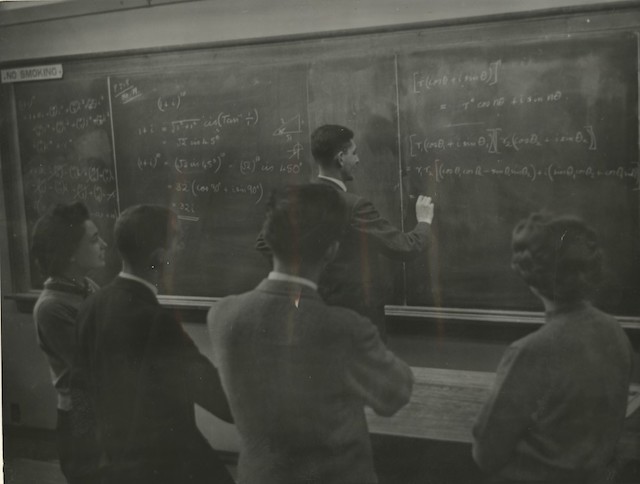
Mathematics was one of the earliest disciplines taught at McGill, beginning in 1848 as Natural Philosophy. McGill placed emphasis on engineering and British-style applied mathematics, making the teaching of math subsidiary to other departments. Until 1945, mathematics was almost wholly a service department with seven faculty members who taught twelve courses in the Faculty of Arts and Science, three courses in the Faculty of Engineering, and one or two courses in the School of Commerce. At this time, there was a small graduate program shared with the Department of Physics. However, most students carried on further graduate work in physics instead of mathematics.
A small group of professors completely reinvigorated the department in the postwar years. One key transformation came in 1945, when McGill professors W. L. G. Williams and Gordon Pall founded the Canadian Mathematical Congress (renamed the Canadian Mathematical Society in the 1970s). The main agenda was to create a national community of mathematicians via regular meetings and to produce research journals — a function they still serve today. They also took the lead in convincing the National Research Council (NRC) to make funds available to support pure mathematics, ultimately galvanizing the study of mathematics in Canada. At McGill, these new NRC funds meant graduate students could focus on their research and studies instead of teaching positions, as they had previously been required to.
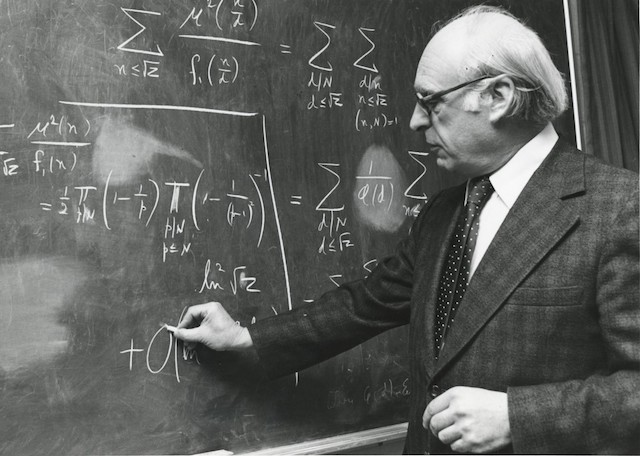
A second notable shift was A. H. S. Gillson’s recommendation of the appointment of Hans Zassenhaus in 1948. Zassenhaus was a reputable pure mathematician, significant for his contributions to algebra and number theory. He attracted a great number of graduate students, which began to grow the small program. The graduate program was further developed by Professor Wacław Kozakiewicz, Professor Charles Fox, and Professor Edward Rosenthall who together brought expertise in statistics, analysis, and number theory, respectively, transforming the graduate school into its current well-known state. The department continued to grow, and analysis and algebra, and particularly category theory, became strong elements in the late 1960s and early 1970s, with lively interest in statistics and applied math. The number of full-time staff in the Department of Mathematics had grown from seven in 1945 to thirty-six by 1960, and to fifty-six by 1970.
McGill awarded its first PhD in mathematics in 1950 to Joachim Lambek who went on to have a very influential career in mathematics. With his championing, McGill became central in the exploration of category theory in the 1970s. McGill’s mathematicians also have ties to the establishment of the Institut des Sciences Mathématiques, a research group for the mathematics community in Quebec.
Today, the Department of Mathematics and Statistics at McGill is known for having many world-famous students and well-known mathematicians, and is particularly recognized for the strength of its undergraduate research and education.
Closed in 2015, the Departmental library was established in 1971 and dedicated in 1987 in honour of Professor Edward Rosenthall. Still available as a historical collection, the Edward Rosenthall Mathematics and Statistics Library held over 14,000 mathematics journals dating from the nineteenth century, more than 10,000 monographs, and a collection of rare mathematics books.
The changing face of STEM
“I hadn’t been aware that there were doors closed to me until I started knocking on them.”
-Gertrude B. Elion
When celebrating the historical accomplishments of exceptional scientists at McGill, it is noteworthy that women at the time were often restricted access to science, technology, engineering, and mathematics (STEM) fields when compared to their male counterparts, resulting in women holding far fewer legacies than men. Societally, women were not provided with the same opportunities and encouragement to pursue STEM subjects as men, resulting in women being required to put in more work than the average male scientist to transcend the structural barriers that inhibited their abilities to succeed in these male-dominated fields. Although there are currently many more women in STEM than there used to be, some of these barriers still persist to this day. With this context in mind, we commemorate women’s accomplishments in the Faculty of Science to celebrate their achievements and acknowledge that they have always faced barriers that men do not.
Prior to women being granted enrolment at McGill in 1884, there were some notable individuals and organizations who worked behind the scenes to advocate for women’s education. Anne Molson and the Montreal Ladies’ Educational Association informally audited classes and attended exams at McGill so that they could still receive an education, though without receiving the subsequent credentials. Thanks to the additional advocacy work by Sir John William Dawson and his wife, as well as a generous donation from Donald A. Smith, women were finally given the chance to attend McGill in a more official capacity in 1884. By 1889, women comprised one third of the student body, and a decade later in 1900, Royal Victoria College was opened, housing women science students and their many social, academic, and athletic groups.
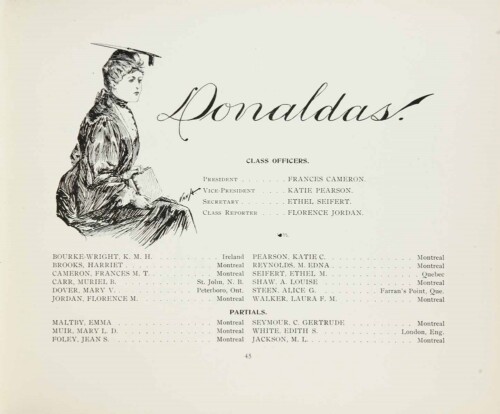
The early 1900s were marked by the work of female figures like Harriet Brooks, a trailblazer and inspiration for women in physics, who left a permanent research legacy in nuclear science. Following Brooks’ achievements at the Master’s level, chemist Annie MacLeod was the first woman to be awarded a PhD at McGill in 1909, setting the precedent for a rich expansion of graduate work at the highest level in not only sciences, but all faculties at the university. Alice Vibert Douglas, who was awarded the Order of the British Empire for her work, completed her BA, Masters, and PhD at McGill by 1926 and was the first woman to be awarded a PhD in astrophysics. Douglas worked at McGill from 1925 to 1939, was President of the International Astronomical Union, and represented Canada during a UNESCO conference in Montevideo, Uruguay.
In addition to the work of Brooks, MacLeod, and Douglas in physics and chemistry, Carrie Derick, the first female professor in Canada, helped science at McGill become increasingly cutting-edge and relevant, sparking the large-scale study of genetics at McGill and the creation of the first Department of Genetics in Canada. Upon her retirement in 1929, Derick became the first female professor emeritus in Canada. Derick was honoured as a National Historic Person by the Government of Canada in 2007 for her “outstanding contribution to science in both the academic and popular spheres.”
Later in the 20th century, Joan Marsden was a zoologist and professor at McGill from 1952 until her retirement in 1987. Marsden is not only known for her profound ecological, physiological, and neurobiological research; she also played a momentous role in establishing the Biology Department in 1969. In honour of her work, McGill created the Joan Marsden Lectures in Organismal Biology.
The Department of Psychology was notably impacted by Virginia Douglas and Brenda Milner. Douglas was a psychologist and professor known for her research on ADHD, having published a groundbreaking paper that is the most cited in the field. Douglas joined McGill in 1958 and expanded the Department of Psychology’s Master’s program into a PhD program. Because of Douglas’s research, ADHD was included in the third edition of the Diagnostic and Statistical Manual of Mental Disorders. Milner, who is 102 years old and is still teaching and conducting research at McGill, pursued her PhD in Physiological Psychology from McGill, where her novel research in neuropsychology led to her founding the field. Milner’s legacy in the field of neuropsychology has been widely recognized through the honorary degrees that have been granted to her, adding up to over twenty.
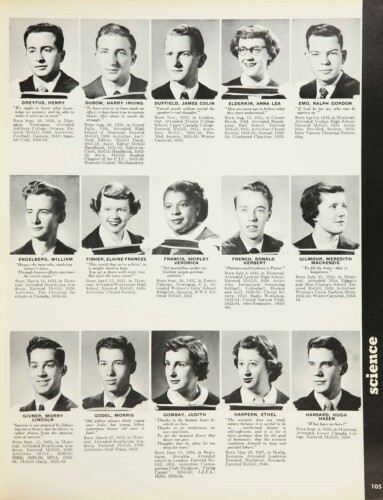
While it is certainly necessary to acknowledge and celebrate these influential women scientists who made groundbreaking contributions to the Faculty of Science and established national and international reputations for themselves, it is important as well to recognize all of the women who attended McGill, both at this time and today, as they continue to dismantle the restrictive structural boundaries that still persist. We all stand on the shoulders of those who came before us.
Image Gallery
Click on the photos to advance through the slideshow.
[rev_slider alias=”science-era-3″][/rev_slider]
